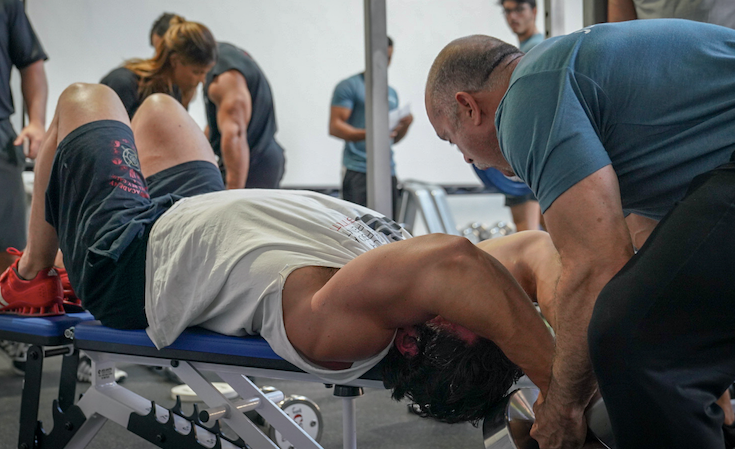Ask the Coach” is the column in which Wolfgang Unsöld answers your questions about training and nutrition. The book of the same name was published by Riva Verlag and Available right here on Amazon.
Question: Hello Mr. Unsöld, I would be interested in your opinion on overlays on the cable, on the machine or with a dumbbell to build muscle in the back. I myself rarely incorporate the exercise into my back training and don't feel any particular sore muscles the next day due to the exercise. Dorian Yates and Jean-Pierre Fux have what I consider to be two of the best back developments in bodybuilding, and both have sworn by pullovers throughout their careers, blaming them as a key contributor to their success. What do you think of this exercise and do you include it in your clients' training? Thank you for your feedback and best regards, Thomas H.
WU: That's a very good question. Pull-ups were a popular exercise for bodybuilders in the last century. Especially in the 1970s, overcoats were primarily designed with the aim of enlarging the chest and thus achieving the V-shape desired by many with a large chest and a small waist. It quickly became known that the enlargement of the chest with covers is not anatomically possible. Whereupon pullovers were performed primarily with the aim of training the back in isolation. In particular, covers on machines, especially the Nautilus Pullover ( Eng. Cover ) machine enjoyed great popularity.
So the pullover is a good exercise for the back, specifically the lats. From a functional anatomy perspective, the primary role of the latissimus is to extend the shoulder. While most back exercises such as pull-ups, lat pulldowns and rows combine shoulder extension with elbow flexion, the pullover primarily trains shoulder extension.
The benefit of combining shoulder extension and elbow flexion is being able to use higher loads and thus generate more tension on the muscle, which is critical for strength and hypertrophy gains.
The advantage of isolating the shoulder extension is that it only trains that shoulder extension without allowing other muscles to compensate for a weak or inactive lat. So it may be that the elbow flexors in particular do the primary work on pull-ups and rows. A primary pump or feeling of fatigue in the arms rather than the back after pull-ups and rows is a fairly reliable indicator that the arms, specifically the elbow flexors, are doing more work than the lats. By isolating shoulder extension, as with pullovers, this compensation can be minimized.
On the other hand, the two primary disadvantages of the isolated shoulder extension and pullover are that it is unable to generate high levels of tension in the muscle over a large range of motion. Second, dumbbell pullovers, the most commonly available option, primarily only overload the end radius. The point where the upper arm is horizontal is where the highest forces are exerted on the lats. The more vertical the upper arm, the less lat recruitment.
In short, this means that the pullover primarily only overloads the lats in their stretched position. You can also describe the dumbbell pullover as "loaded stretching" for the back or latissimus.
I rarely use overlays in my clients' and athletes' programs. And if I use them then primarily for 2 reasons:
1. To isolate the lats as part of a grouping, use multiple exercises such as a pre- or post-exhaustion superset.
2. As a loaded stretching for the latissimus to open it and thus improve mobility, especially in overhead movements.
This makes pullovers an exercise that has two very specific benefits. And it is precisely for these two that I use them in the Design program. However, pullovers are not a substitute for pull-ups, rows, and high-resistance deadlifts for building strength and hypertrophy in the back . Also, the two bodybuilders you named were known to train their backs very heavily. And then complement that heavy back workout with an exercise like pullovers.
Good luck with the specific use of covers in the training program!
Image: Roan Heming demonstrates a variation of the pullover - the JC sweater - during a pre- and post-exhaustion set at recent training camp in the Dominican Republic. This variant is primarily suitable for overloading the latissimus in a stretched position and is named after my colleague Juan Carlos Simo. Characteristics of this variation are the position on the flat bench, a tight, neutral grip on the dumbbell, a very tight position of the elbows and a backwards-down movement of the eccentrics.

